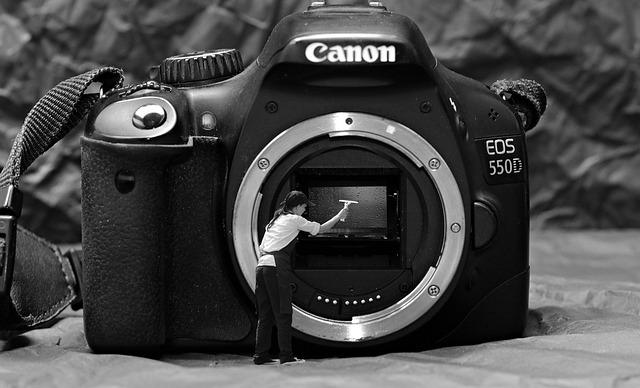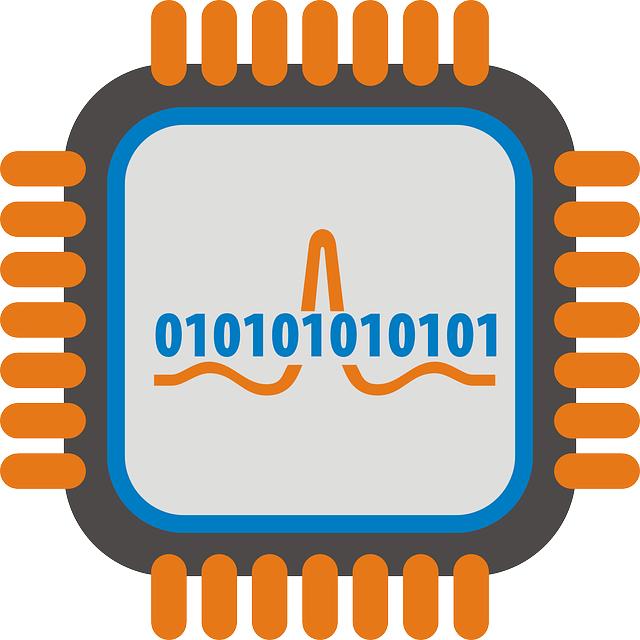As the world of navigation technology continues to evolve at breakneck speed, the debate between LIDAR sensors and traditional cameras has gained significant traction. Both systems offer unique advantages and challenges, each wielding the power to shape the future of autonomous vehicles, robotics, and spatial mapping. LIDAR, with its intricate ability to create precise, three-dimensional representations of the surrounding environment, stands as a formidable contender. Meanwhile, cameras, those familiar eyes of technology, bring a wealth of visual data that is both rich in detail and ease of interpretation. But as we delve deeper into this intricate comparison, the question remains: are LIDAR sensors truly better than cameras? In this article, we will navigate the terrain of these two pivotal technologies, exploring their functionalities, applications, and the contexts where one may outshine the other. Join us as we unpack this fascinating juxtaposition in the realm of navigation tech.
LIDAR vs. Cameras: Understanding Their Unique Strengths and Limitations
When it comes to navigation technology, both LIDAR and cameras bring distinct capabilities to the table. LIDAR, or Light Detection and Ranging, excels in creating precise 3D maps of the environment using laser beams. This technology thrives in conditions where visibility may be compromised, such as at night or during poor weather. Its strengths include:
- High accuracy in depth perception
- Excellent performance in varied lighting conditions
- Ability to generate detailed terrain models
On the other hand, cameras capture rich visual information, allowing for detailed texture and color interpretation. They offer a more nuanced understanding of the environment, particularly in identifying objects and interpreting scenes. However, they can struggle under low-light conditions or in the presence of harsh glare. The advantages of camera technology include:
- Cost-effectiveness compared to LIDAR systems
- Ability to utilize computer vision algorithms for object recognition
- High resolution for color image capture
| Feature | LIDAR | Cameras |
|---|---|---|
| Accuracy | High | Moderate |
| Weather Resilience | Excellent | Poor |
| Cost | High | Low |

The Role of Environmental Conditions in Sensor Performance
Environmental conditions play a crucial role in determining the effectiveness of sensor technologies, significantly affecting their ability to collect accurate data. Factors such as light levels, weather conditions, and surface reflectivity can either enhance or hinder performance. For instance, LIDAR sensors utilize infrared light, allowing them to function effectively even in low-light situations. However, challenges may arise during heavy rain or fog, leading to a reduction in accuracy due to scattering of the laser beams. On the other hand, cameras rely on visible light and can struggle in conditions of poor illumination, although they excel in capturing rich color data in optimal lighting scenarios.
To better understand how various conditions influence sensor functionality, consider the following attributes:
| Condition | LIDAR Performance | Camera Performance |
|---|---|---|
| Bright Sunlight | Good | Excellent |
| Fog | Fair | Poor |
| Rain | Fair | Poor |
| Low Light | Good | Poor |
Ultimately, understanding these environmental influences can guide the selection of technology for specific applications, ensuring optimal performance in a variety of operational contexts. Choosing between LIDAR and cameras often boils down to the specific environmental requirements of the navigation tasks at hand.

Integration and Cost: Finding the Right Balance for Navigation Solutions
When evaluating navigation solutions, particularly in autonomous vehicles, integration and cost play crucial roles in determining the most effective technology. LIDAR sensors offer high precision in mapping the environment but come with substantial price tags, making them less accessible for all applications. In contrast, cameras, which are significantly cheaper, can provide valuable visual data and, when combined with advanced computer vision algorithms, can simulate some of the depth perception capabilities of LIDAR systems. Therefore, the decision to invest in one technology over the other often hinges on budget constraints, operational requirements, and the specific challenges of the environment in which the navigation system will be deployed.
Furthermore, achieving an optimal balance between these technologies may require a hybrid approach. By leveraging the strengths of both LIDAR and cameras, developers can create a system that compensates for the weaknesses of each. For example, using LIDAR for precise distance measurements while deploying cameras for rich visual information allows for a more holistic understanding of the surroundings. The integration of both technologies can lead to improved safety and performance, even though it may initially increase development costs. An analysis of the following factors can assist in making this balance:
| Factor | LIDAR | Cameras |
|---|---|---|
| Cost | High | Low |
| Environmental Sensitivity | Moderate | High |
| Data Output Quality | High | Dependent on Algorithms |
| Range | Long | Short |

Future Trends: Emerging Technologies in Navigation and Their Potential Impact
As the race for precision in navigation intensifies, emerging technologies stand poised to redefine how we understand spatial awareness. LiDAR and computer vision, two front-runners in this transformation, are finding innovative applications beyond traditional mapping and autonomous vehicles. The integration of these technologies is leading us toward enhanced functionalities like real-time obstacle detection, dynamic route planning, and advanced environmental understanding. With growing investment and research into machine learning, we are on the brink of navigation systems that can not only interpret their surroundings but also predict changes based on environmental patterns.
Furthermore, the collaboration of various technologies is increasingly evident in their potential applications. Imagine a future where augmented reality (AR) interfaces work in tandem with LiDAR to create immersive navigation experiences for users. The benefits could include:
- Improved safety: Navigation systems that anticipate hazards before they occur.
- Enhanced user experience: Interactive overlays that provide real-time updates and context-aware information.
- Adaptive learning: Systems evolving based on user preferences and historical data.
This evolving landscape indicates a future where navigation technology is not just about getting from point A to point B but about creating a more connected and informed world, paving the way for smarter cities and seamless user interactions.
Future Outlook
In the ever-evolving landscape of navigation technology, the question of whether LIDAR sensors surpass traditional cameras is one that stirs considerable debate. As we peel back the layers of this intricate topic, it’s evident that both technologies bring their own strengths and weaknesses to the table. LIDAR, with its precision and ability to create detailed 3D maps, excels in environments where visibility is compromised. On the other hand, cameras offer versatility and a level of detail that echoes the human perception spectrum.
Ultimately, the choice between LIDAR and cameras isn’t a matter of superiority, but rather of synergy; each tool complements the other, paving the way for a more robust navigation system. As we move further into an age where autonomous vehicles and advanced robotics play an increasingly pivotal role in our lives, understanding these technologies and their interplay will be crucial.
So, the next time you ponder the future of navigation, remember: it’s not just about choosing one over the other—it’s about embracing a fusion of innovation that sets the course for tomorrow. The journey is just beginning, and the road ahead is paved with possibilities.




